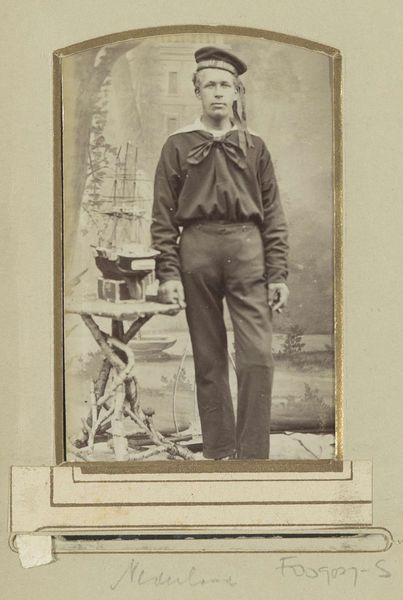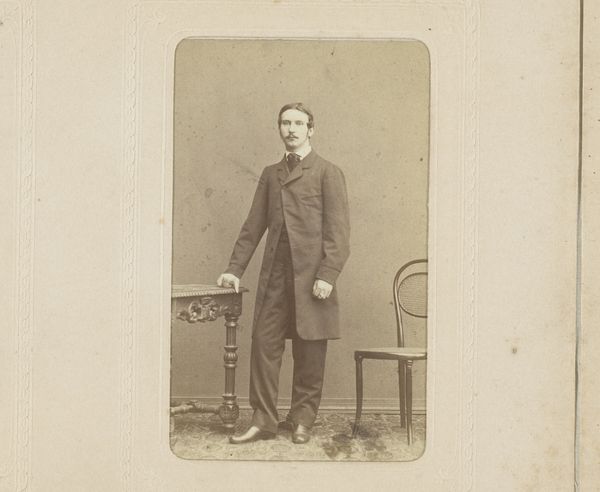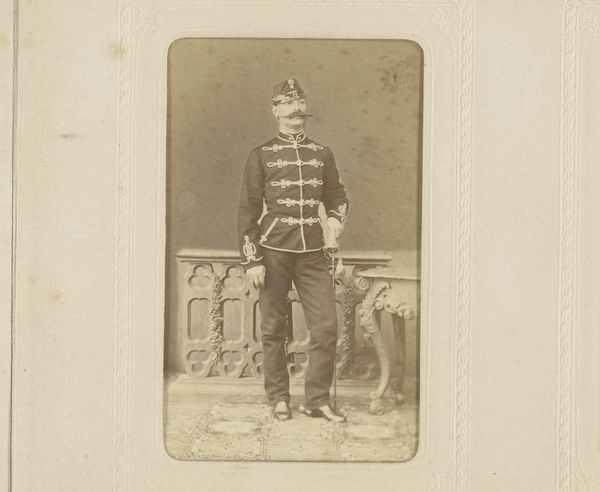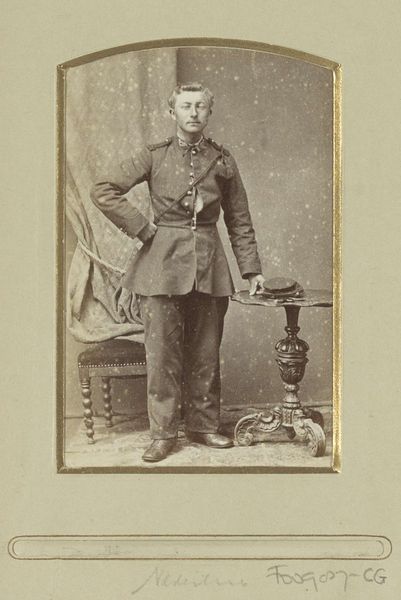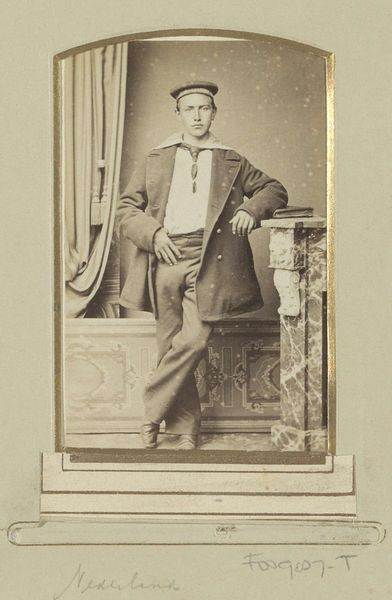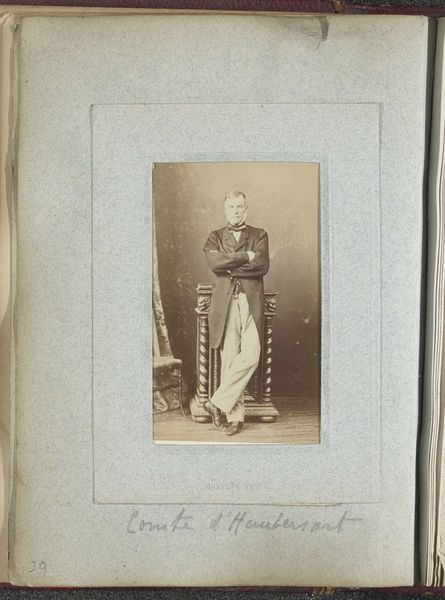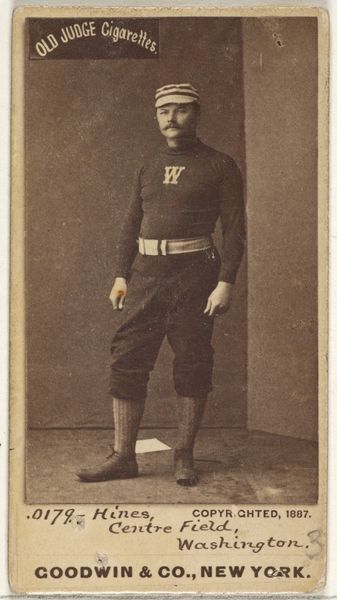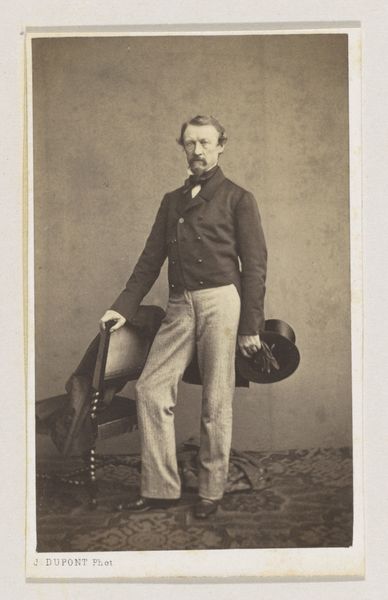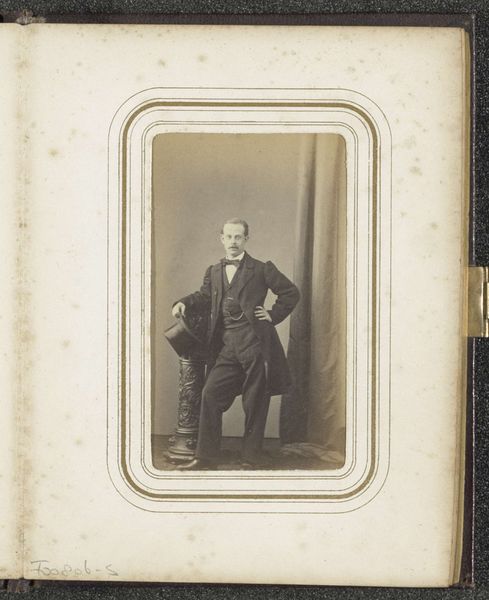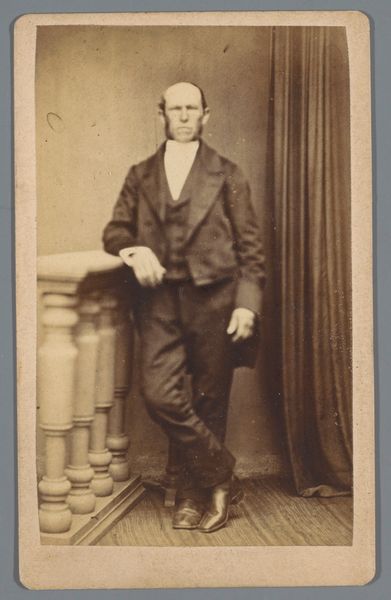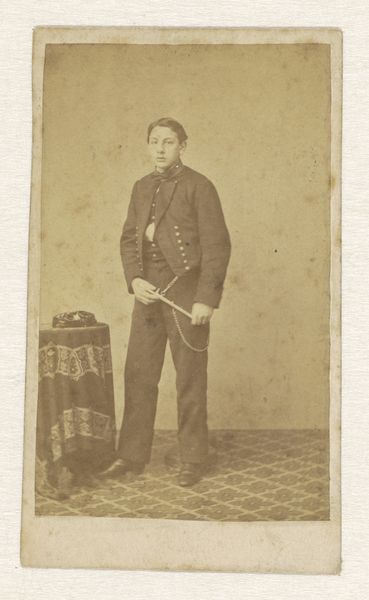
Portret van een (vermoedelijk) Nederlandse militair, staand met sabel bij een schouw c. 1864 - 1870
0:00
0:00
photography
#
portrait
#
aged paper
#
toned paper
#
aged
#
photo restoration
#
photography
#
historical photography
#
old-timey
#
19th century
Dimensions: height 100 mm, width 61 mm
Copyright: Rijks Museum: Open Domain
Editor: This is a photograph, "Portret van een (vermoedelijk) Nederlandse militair, staand met sabel bij een schouw," or, "Portrait of a (presumably) Dutch military man, standing with a saber by a fireplace." It’s dated from around 1864 to 1870. What strikes me is how formal it is, almost staged, but the aged paper gives it a fragile, intimate quality too. What do you see in this piece, focusing on its materials and how it was made? Curator: For me, the key is to consider this object as more than just a representation. We have to consider the economic and social context of its production. This is a photographic print, likely an albumen print, judging by the warm tones and the period. These prints were produced en masse during the mid-19th century. How does the availability of this new technology influence the ways the subject, in this case the military man, is portrayed and perceived? Was the relatively affordable method for capturing imagery impacting ideas about craft, tradition, portraiture, or self-representation at that moment? Editor: So, you're saying that the *process* of creating the photograph, its mass production and materiality, changes how we view the subject itself? I see the connection - portraiture had previously been restricted to the wealthy, as a symbol of luxury, whereas now we see military figures rendered commonplace via reproducibility. Curator: Exactly. And let’s consider the saber and uniform - the materials used in their construction, the labor involved in their creation. Are these signs of military might, or are they markers of the industrialization of warfare? Think about the societal impact and even global access to new imaging technologies at the time. That context is what gives this photograph it's value, no? It's not just about aesthetics; it’s about labor and industrial production and how people relate to it. Editor: I see what you mean. Considering it as a manufactured object with inherent cultural associations gives it so much more depth. Curator: Precisely. Considering art as bound up in both economic forces, access, and technological revolution.
Comments
No comments
Be the first to comment and join the conversation on the ultimate creative platform.
